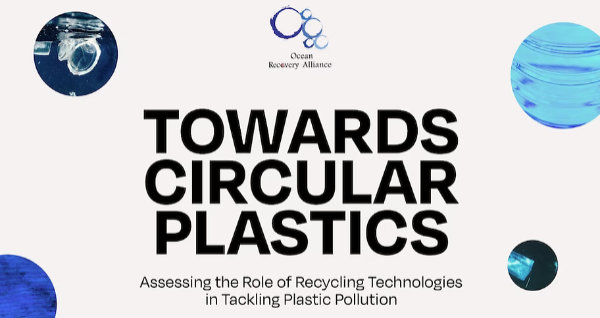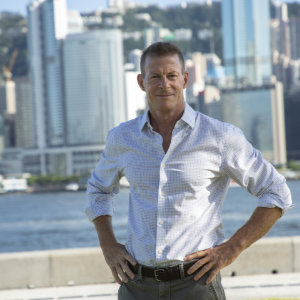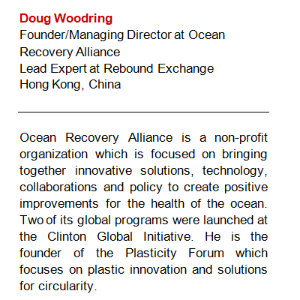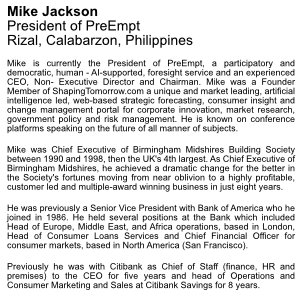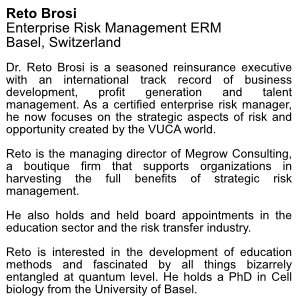Article 04
AI
Power: Hotels Reinvent Hospitality Now
by
Are Morch, IBM Applied AI Pro helping hotels
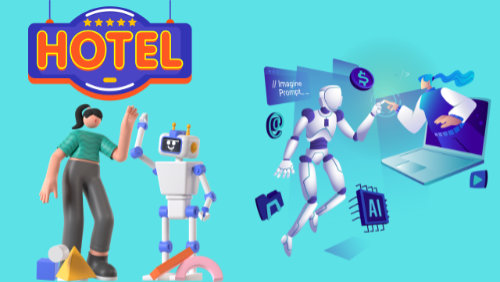
December
26, 2024
The hospitality industry, a realm built
on human connections and personalized experiences, is at the cusp of
a technological revolution. Artificial intelligence (AI) is making waves,
promising increased efficiency, enhanced guest experiences, and new
avenues for revenue generation. However, amidst the excitement, it's
crucial to maintain a balanced perspective.
While AI is a powerful tool, it's not a
magic bullet that will solve every problem. To truly leverage AI's potential,
hospitality businesses need a strategic approach, one that embraces
innovation and creates new value propositions.
This is where the Blue Ocean Strategy comes
in, guiding the hospitality industry towards uncharted territories of
opportunity. This strategy encourages businesses to focus on creating
new market spaces where competition is minimized, rather than battling
it out in existing, overcrowded markets (red oceans).
This article will delve into the specific
ways AI can transform hospitality, highlight its limitations, and demonstrate
how a Blue Ocean Strategy can be instrumental in navigating the journey
of AI adoption, from evaluation to daily operations.
1. AI's Potential to Transform Hospitality: A Deeper Dive
AI's potential to reshape the hospitality
landscape is vast. Let's explore the key areas where it can have a significant
impact:
1.1 Optimizing Operations for Seamless Efficiency
Demand Forecasting: AI algorithms
can analyze historical booking data, weather patterns, local events,
and economic indicators to predict fluctuations in demand with remarkable
accuracy.
Action Point: Implement AI-powered
forecasting tools to optimize staffing levels, ensuring adequate personnel
during peak seasons and avoiding overstaffing during slower periods.
This can improve workforce management, reducing labor costs while maintaining
service quality.
Action Point: Use AI to predict
food and beverage consumption patterns, minimizing waste and ensuring
optimal inventory levels.
Revenue Management: AI can dynamically
adjust room rates and package pricing in real time, considering factors
like competitor pricing, demand levels, and even social media sentiment.
Action Point: Deploy AI-driven revenue
management systems that automatically optimize pricing strategies across
different booking channels, maximizing revenue per available room (RevPAR).
Automating Routine Tasks: AI-powered
chatbots can handle basic inquiries, process reservations, and even
manage check-in and check-out procedures, freeing up human staff for
more complex tasks.
Action Point: Integrate AI chatbots
on websites and messaging platforms to provide instant customer support
and automate routine tasks, enhancing efficiency and reducing response
times.
Action Point: Explore using robotics
for tasks like luggage handling, room cleaning or service, or even front
desk assistance.
Energy Management: Smart sensors
and AI algorithms can optimize energy consumption by adjusting lighting,
temperature, and ventilation based on occupancy and usage patterns.
Action Point: Install smart energy
management systems that leverage AI to minimize energy waste and reduce
operational costs, contribute to sustainability goals, and potentially
earn green certifications that attract environmentally conscious travelers.
1.2 Enhancing Guest Experience: Personalization and Beyond
Personalization: AI can analyze
guest data (with proper consent) to understand individual preferences,
past behavior, and even sentiment from online reviews. This enables
hyper-personalized recommendations for dining, activities, and services,
making each guest feel valued and understood.
Action Point: Develop a centralized
guest data platform that integrates with AI tools to deliver personalized
offers, recommendations, and experiences throughout the guest journey.
Action Point: Use AI to tailor in-room
entertainment options based on individual guest profiles, ensuring a
more enjoyable and engaging stay.
Improved Customer Service: AI-powered
virtual assistants can provide instant support, answer questions, resolve
issues, and even offer local recommendations, enhancing the overall
guest experience.
Action Point: Train AI chatbots
to handle a wide range of guest inquiries, including FAQs, local recommendations,
and service requests, providing 24/7 support.
Action Point: Use AI-driven sentiment
analysis to monitor guest feedback across various channels, allowing
for quick identification and resolution of negative experiences.
Smart Rooms: AI can enable smart
room features that personalize the guest environment, from automated
lighting and temperature control to customized entertainment options.
Action Point: Implement smart room
technologies that allow guests to control various aspects of their room
environment through voice commands or mobile apps, creating a more comfortable
and convenient stay.
Gather and Analyze Guest Feedback: AI
tools can analyze guest reviews, social media mentions, and survey responses
to identify trends, patterns, and areas for improvement in service delivery.
Action Point: Leverage natural language
processing (NLP) to analyze guest feedback and generate actionable insights
that can be used to improve service quality and guest satisfaction.
1.3 Driving Innovation: Insights and New Revenue Streams
Data Analysis: AI can process and
analyze vast amounts of data from various sources, including booking
systems, guest interactions, and market trends, revealing hidden patterns
and opportunities.
Action Point: Utilize AI-powered
analytics platforms to gain deeper insights into guest behavior, market
trends, and operational performance, informing strategic decision-making.
Predictive Analytics: AI can forecast
future trends, anticipate guest needs, and identify potential challenges,
allowing businesses to proactively adapt and stay ahead of the curve.
Action Point: Employ AI-driven predictive
models to forecast demand, optimize pricing strategies, and anticipate
future trends, enabling proactive planning and resource allocation.
Identifying New Revenue Streams: By
analyzing data, AI can help identify unmet guest needs and emerging
market trends, creating opportunities for new services, offerings, and
revenue streams.
Action Point: Use AI to identify
gaps in the market and develop new services or experiences that cater
to specific guest segments, expanding revenue opportunities. For example,
AI could help identify a growing interest in wellness travel and prompt
a hotel to develop specialized wellness packages.
2. The Limitations of AI: Where the Human Touch Remains Essential
While AI offers immense potential, it's
crucial to acknowledge its limitations:
2.1 The Irreplaceable Human Connection
Hospitality is fundamentally built on human
interaction. The warmth of a genuine smile, the empathy in a listening
ear, and the personalized attention that anticipates a guest's needs
- these are elements that AI cannot fully replicate.
Action Point: Invest in training
programs that enhance employees' interpersonal skills and emotional
intelligence, empowering them to deliver truly exceptional service that
goes beyond what AI can achieve.
Action Point: Design service protocols
that emphasize human interaction at key touchpoints, ensuring that guests
feel genuinely welcomed and cared for.
2.2 Navigating Complex Emotional Situations
AI systems, while improving, still struggle
with the nuances of human emotions. Dealing with a guest who is experiencing
a personal crisis, handling a delicate complaint, or resolving a complex
interpersonal conflict requires empathy, intuition, and emotional intelligence
that AI currently lacks.
Action Point: Develop clear escalation
procedures that ensure complex or emotionally charged situations are
promptly handled by trained human staff.
Action Point: Implement feedback
mechanisms that allow guests to easily connect with a human manager
when needed, ensuring a safety net for situations where AI falls short.
2.3 Fostering Creativity and Intuition
While AI can generate ideas based on data
patterns, it lacks the creative spark, intuition, and "gut feeling"
that often lead to truly innovative and groundbreaking ideas in hospitality.
Action Point: Create innovative
teams that combine the analytical power of AI with the creative thinking
of human employees to generate unique and compelling guest experiences.
Action Point: Encourage a culture
of experimentation and empower employees to share their creative ideas,
fostering an environment where human ingenuity can flourish alongside
AI.
2.4 The Data Dependency Dilemma
AI's effectiveness hinges on the quality
and availability of data. Inaccurate, incomplete, or biased data can
lead to flawed insights and poor decision-making.
Action Point: Implement robust data
governance policies to ensure data accuracy, completeness, and security.
Action Point: Invest in data cleaning
and validation processes to maintain high-quality data for AI training
and analysis.
Action Point: Ensure that data is
ethically sourced and used in compliance with privacy regulations, like
GDPR.
2.5 The Ethical Tightrope
AI systems can inherit biases from the
data they are trained on, leading to potentially discriminatory outcomes.
Ethical considerations regarding data privacy, algorithmic bias, and
job displacement require careful attention.
Action Point: Establish ethical
guidelines for AI development and deployment, ensuring fairness, transparency,
and accountability.
Action Point: Regularly audit AI
systems for bias and take corrective measures to mitigate any discriminatory
outcomes.
Action Point: Engage in open and
transparent communication with stakeholders about the use of AI in the
organization, addressing concerns and building trust.
2.6 Adapting to the Unforeseen
While AI can learn and adapt, it may struggle
with completely unforeseen circumstances that require rapid problem-solving
and out-of-the-box thinking. A sudden local emergency or a global event
like a pandemic requires human adaptability and quick decision-making.
Action Point: Develop contingency
plans for situations where AI systems may be disrupted or unavailable,
ensuring business continuity.
Action Point: Empower employees
to make independent decisions in exceptional circumstances, fostering
a culture of adaptability and resilience.
2.7 The ROI Uncertainty
Implementing AI can involve significant
investments in technology, training, and maintenance. The return on
investment is not always guaranteed and can depend on various factors,
including the specific use case, implementation strategy, and organizational
readiness.
Action Point: Conduct thorough cost-benefit
analyses before implementing AI solutions, carefully evaluating potential
ROI and long-term sustainability.
Action Point: Start with pilot projects
to test and refine AI solutions before scaling up, minimizing risks,
and maximizing the likelihood of success.
3. Blue Ocean Strategy: Charting a New Course for AI Adoption
The Blue Ocean Strategy provides a framework
for creating new market spaces and escaping the cutthroat competition
of existing markets. In the context of AI adoption, it can guide hospitality
businesses to develop unique value propositions that leverage AI in
innovative ways.
3.1 Identifying Blue Ocean Opportunities
Action Point: Conduct a "strategy
canvas" analysis to map the current competitive landscape and identify
areas where the industry is overserving or underserving guest needs.
This involves evaluating the factors of competition (e.g., price, location,
amenities) and their relative importance to different guest segments.
Action Point: Use the "Four
Actions Framework" (Eliminate, Reduce, Raise, Create) to rethink
the value proposition:
Eliminate: Which factors that the
industry takes for granted can be eliminated? (e.g., eliminating front
desk check-in through mobile check-in)
Reduce: Which factors can be reduced
well below the industry standard? (e.g., reducing wait times through
AI-powered service)
Raise: Which factors should be raised
well above the industry standard? (e.g., raising the level of personalization
through AI-driven recommendations)
Create: Which factors should be
created that the industry has never offered? (e.g., creating AI-powered
personalized travel itineraries or virtual concierge services that anticipate
guest needs)
Action Point: Explore "non-customers"
– those who are not currently served by the industry – and
identify their unmet needs that could be addressed through AI-powered
solutions. For example, could AI be used to create more accessible travel
experiences for people with disabilities?
3.2 Integrating Blue Ocean with the AI Journey
AI Evaluation: Use the Blue Ocean
framework to identify AI applications that create new value curves,
rather than simply automating existing processes. For example, instead
of just using AI to automate check-in, consider how AI could create
a completely new arrival experience that is personalized and seamless.
Action Point: When evaluating AI
solutions, prioritize those that have the potential to create new value
for guests and differentiate your business from competitors, aligning
with the Blue Ocean principles.
Getting AI-Ready: Prepare your organization
for AI adoption by fostering a culture of innovation and data literacy.
Action Point: Invest in training
programs that equip employees with the skills needed to work alongside
AI, such as data analysis, critical thinking, and creative problem-solving.
Action Point: Establish cross-functional
teams that bring together IT, operations, marketing, and guest services
to collaborate on AI initiatives, ensuring a holistic approach to implementation.
Starting AI Implementation: Begin
with pilot projects that align with your Blue Ocean strategy, focusing
on creating new value propositions rather than simply replicating existing
processes.
Action Point: Select pilot projects
that have the potential to deliver significant impact and demonstrate
the value of AI in creating new market spaces.
Action Point: Measure the results
of pilot projects carefully, using both quantitative and qualitative
data to assess their impact on guest satisfaction, operational efficiency,
and revenue generation.
Using AI in Day-to-Day Operations: Continuously
monitor and refine your AI solutions, ensuring they remain aligned with
your Blue Ocean strategy and continue to deliver unique value to guests.
Action Point: Establish feedback
loops that allow for continuous improvement of AI systems based on guest
feedback and operational data.
Action Point: Regularly revisit
your strategy canvas and Four Actions Framework to identify new opportunities
for innovation and ensure that your AI initiatives continue to create
blue oceans.
4. AI: Enhancing the Human Touch with Creativity and Innovation
AI, when used strategically, can enhance
the human touch in hospitality rather than replace it. By automating
routine tasks and providing valuable insights, AI can free up human
employees to focus on what they do best: creating meaningful connections
with guests and delivering exceptional, personalized experiences.
4.1 AI as a Creative Partner
AI can be a powerful tool for creative
exploration. By analyzing data and generating ideas, AI can help hospitality
professionals identify new opportunities for innovation and develop
unique guest experiences.
Action Point: Use AI-powered tools
to brainstorm new service concepts, generate creative marketing campaigns,
and design personalized guest experiences that would be difficult to
conceive without the aid of data analysis and pattern recognition.
Action Point: Combine AI-generated
insights with human creativity to develop innovative solutions that
address unmet guest needs and create memorable moments.
4.2 AI Empowering Human Empathy
AI can provide valuable insights into guest
preferences, emotions, and behavior, enabling employees to deliver more
empathetic and personalized service.
Action Point: Equip frontline staff
with AI-powered tools that provide real-time insights into guest preferences
and sentiment, allowing them to tailor their interactions and anticipate
guest needs.
Action Point: Use AI to identify
guests who may be experiencing difficulties or require special attention,
enabling employees to proactively offer support and create a more caring
and personalized experience.
4.3 AI Driving Operational Excellence to Free Up Human Potential
By automating routine tasks and optimizing
operations, AI can free up human employees to focus on higher-value
activities that require creativity, empathy, and interpersonal skills.
Action Point: Identify tasks that
are currently performed manually but could be automated with AI, allowing
employees to focus on more engaging and meaningful interactions with
guests.
Action Point: Invest in training
programs that help employees develop the skills needed to leverage AI
effectively and focus on tasks that require human creativity and emotional
intelligence.
5. Conclusion: Embracing the Future of Hospitality
The future of hospitality lies in a harmonious
blend of human touch and artificial intelligence. By embracing a Blue
Ocean Strategy, the industry can leverage AI not just to improve efficiency
but to create entirely new value propositions that redefine the guest
experience.
AI should be viewed as a powerful tool
that empowers human employees, enhances their capabilities, and allows
them to focus on what truly matters: creating meaningful connections
and delivering exceptional, personalized service that fosters lasting
memories.
The journey will require a commitment to
innovation, a willingness to experiment, and a deep understanding of
both the potential and limitations of AI. By navigating these waters
wisely, the hospitality industry can chart a course toward a future
where technology and human ingenuity work together to create a truly
remarkable and transformative guest experience.
The key is to remember that AI is not a
replacement for human connection but rather an enabler of it, allowing
the industry to reach new heights of creativity, personalization, and
service excellence.
Contact me today to discuss how we can
leverage AI to revolutionize your hotel and create a truly unique and
unforgettable guest experience.

ARE
MORCH
Founder and Digital Transformation & AI Coach
As an IBM Applied AI Professional, Prompt Engineering
Specialist, and Google Cloud Data Analyst, Are specializes in guiding
hotels through digital transformation and AI integration. By opening
their digital front doors, reimagining processes and culture, and transforming
guest experiences, Are empowers hotels to thrive in a fast-paced world
without relying on online travel agencies.
In his free time, Are and his wife transformed abused
and abandoned horses providing them a better opportunity to do what
they were meant to do.
“To me hospitality, digital transformation
and AI are art. It is like a painter that uses a combination of colors
to create a picture. And we will all have a unique perspective on how
we view the finished product. The key is to bring out the commonalities
that tell us that this is an experience we want to share with others.”
CONTENT

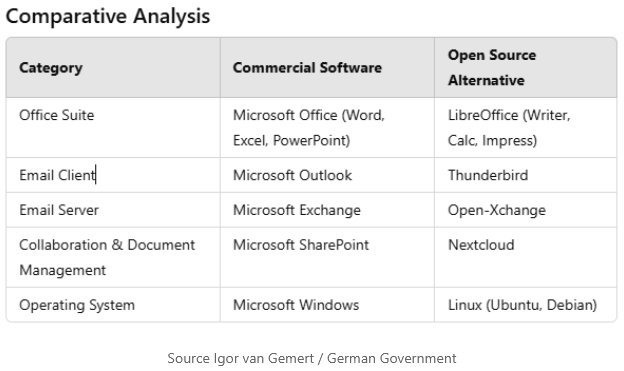



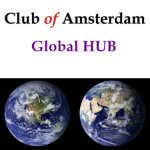

 Fiona Carroll
Fiona Carroll Rafael Weber Hoss
Rafael Weber Hoss